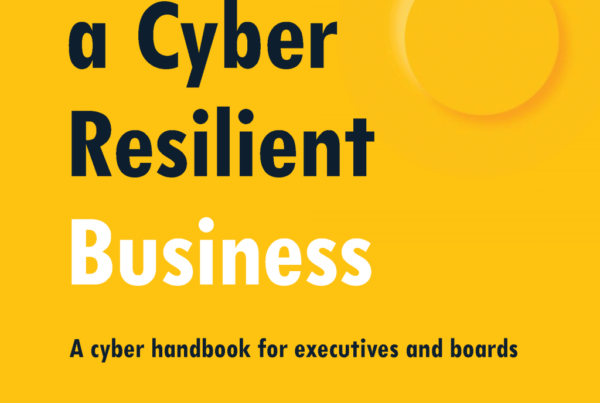As a female entrepreneur navigating the often turbulent waters of fundraising, I have encountered a myriad of challenges that go beyond the typical hurdles of starting and scaling a business. What has struck me the most is the pervasive influence of biases—both conscious and unconscious—that linger in the world of investment. These biases shape perceptions, influence decisions, and, ultimately, determine who gets funded and who does not.
In my journey, I have witnessed firsthand the subtle yet powerful ways these biases operate. From the moment I step into a pitch meeting, I can feel the weight of expectations and stereotypes pressing down on me. This experience is not unique to me; countless women entrepreneurs face similar obstacles. The statistics back this up: women often receive a fraction of the investment that their male counterparts do.
Understanding these biases is crucial, not only for those of us who are seeking funding but also for the investors making those critical decisions. By highlighting the impact of these biases, I aim to shed light on the systemic challenges inherent in the fundraising process and advocate for a more equitable landscape for all entrepreneurs. Join me as I delve into my experiences with bias, the statistical evidence that underscores these disparities, and the actionable strategies that can pave the way for change.
My Experience with Conscious Bias
As I prepared for my first fundraising pitch, I felt a mix of excitement and apprehension. I had poured my heart and soul into my business, believing it had immense potential. However, as I walked into that boardroom, I sensed the underlying current of skepticism directed at me. It was clear that my gender played an unwelcome role in shaping the perceptions of the investors present. A survey by Eagly and Carli (2007) indicates that investors often associate leadership with traits traditionally attributed to men, such as decisiveness and confidence. This cultural stereotype loomed over me, influencing how I was perceived, regardless of my qualifications or the merit of my business idea.
During my pitch, I noticed subtle but distinctive cues: raised eyebrows, crossed arms, and a lack of eye contact. These reactions confirmed my fears about conscious bias. I could almost hear the silent judgments being made, where my competence was questioned solely because I was a woman. Such biases are not merely anecdotal; they are backed by research showing that women entrepreneurs often face a higher barrier to entry in securing funding. Despite having the same qualifications, my male counterparts were frequently viewed through a lens of greater capability. This conscious bias created a palpable barrier that I had to navigate while trying to secure the resources needed to grow my business.
The Insidious Nature of Unconscious Bias
While conscious bias is overt and easily identifiable, the unconscious bias I encountered was far more insidious. These biases operate beneath the surface of awareness, subtly influencing decisions without any intention of malice. I vividly recall a moment during a pitch when a male investor interrupted me, redirecting the conversation back to my male colleague, despite my thorough explanations. This wasn’t just an isolated incident; it was a reflection of a deeper, systemic issue. Research from Moss-Racusin et al. (2012) reveals that identical résumés are evaluated quite differently based solely on the name attached. This stark divide illuminated the insidious ways in which unconscious biases can serve as barriers, often without the individuals involved even realizing it.
The implications of these biases extend far beyond an individual pitch meeting. They perpetuate a cycle of underrepresentation, where women entrepreneurs are systematically overlooked for funding opportunities. As I navigated various funding rounds, I often felt that my ideas, while innovative and viable, were being dismissed due to these unconscious perceptions. The challenge lies in recognizing these biases and understanding their profound impact on decision-making. Investors must confront their own subconscious judgments to create a more inclusive and equitable landscape for all entrepreneurs.
Statistical Evidence of Gender Disparities in Funding
The statistics surrounding gender disparities in funding present a stark reality that cannot be ignored. According to PitchBook (2021), female entrepreneurs received only 2.3% of total venture capital dollars in 2020. This staggering figure serves as a clarion call for change. It highlights the significant funding gap that exists and underscores the need for immediate action. The Global Entrepreneurship Monitor further indicates that female-led startups are 63% less likely to receive funding compared to their male counterparts (GEM, 2019). These statistics are not merely numbers; they represent countless women who have brilliant ideas but struggle to secure the necessary capital due to systemic biases.
Moreover, this disparity is even more acute for women of color. A report from Crunchbase (2021) reveals that Black women entrepreneurs received a mere 0.6% of venture capital funding in 2020. This shocking statistic illustrates the compounded effects of gender and racial bias, showcasing the urgent need for systemic change in how funding is distributed. As I reflect on my own experience, I recognize that these statistics represent real people with dreams and ambitions that deserve to be supported. Understanding the gravity of these disparities is essential for investors and stakeholders who wish to foster a more equitable entrepreneurial ecosystem.
The Impact of Bias on My Fundraising Journey
Navigating the fundraising landscape as a female entrepreneur has been a journey fraught with obstacles rooted in bias. Each pitch meeting often felt like a battle—not just for funding, but for validation and recognition of my capabilities. The biases I encountered—both conscious and unconscious—created a significant impact on my ability to secure the resources necessary for my business. I found myself constantly having to prove my worth, often over-explaining my qualifications and the potential of my venture. This struggle not only affected my confidence but also diverted my focus from what truly mattered: the growth and development of my business.
The emotional toll of battling bias is something that is rarely discussed. Each rejection felt personal, yet I knew it was a reflection of the broader systemic issues at play. The lack of female representation in investment roles exacerbated this challenge, as studies indicate that female investors are more likely to fund women-led ventures (Kauffman, 2019). Therefore, the absence of women in decision-making roles within venture capital firms perpetuates a cycle of underfunding.
Statistical Evidence of Gender Disparities in Funding
The landscape of venture capital funding starkly highlights the disparities faced by female entrepreneurs. These discrepancies are not just anecdotal; they are backed by a body of research that reveals the systemic inequities embedded in our funding ecosystem. As I reflect on my own experiences, the statistics surrounding gender disparities in funding resonate deeply, underscoring the urgent need for change.
-
According to PitchBook’s 2021 report, female entrepreneurs secured a mere 2.3% of all venture capital dollars in 2020. This figure is a glaring indication of the systemic barriers that women face in accessing essential funding.
-
The Global Entrepreneurship Monitor (GEM) reported that female-led startups are 63% less likely to receive funding compared to their male counterparts. This staggering statistic reveals the stark reality many of us confront when seeking investment.
-
For women of color, the statistics are even more disheartening. A report by Crunchbase noted that Black women entrepreneurs received only 0.6% of venture capital funding in 2020. This alarming number illustrates the compounded effects of both gender and racial bias.
-
Furthermore, a study by the Kauffman Foundation found that underrepresentation of women in investment roles correlates with a significant decrease in the likelihood of investing in female-led startups. This reinforces the notion that diversity in investment teams is crucial for equitable funding decisions.
These statistics are not merely numbers; they represent real lives, dreams, and aspirations that are often overlooked. Each percentage point tells a story of potential stifled by bias, of innovative ideas sidelined because of preconceived notions about gender. Awareness of these disparities is essential for all stakeholders in the entrepreneurial ecosystem. In recognizing these figures, we can begin to understand the systemic changes necessary to level the playing field and foster a more inclusive environment for all entrepreneurs.
Strategies for Overcoming Bias in Fundraising
Navigating the biases in fundraising can feel like an uphill battle, but I firmly believe that there are actionable strategies we can adopt to level the playing field. One of the most effective approaches is increasing awareness around biases, especially among investors. Training programs that help them recognize their implicit biases can be transformative. For instance, organizations like the Female Founders Fund have begun implementing diversity and inclusion training that encourages investors to reflect on their decision-making processes. By fostering this awareness, we can start to dismantle the biases that cloud judgment and affect funding opportunities.
Another key strategy is to standardize evaluation criteria during the investment process. By utilizing structured interviews and objective metrics to assess pitches, we can minimize the subjective influence of biases. In my experience, when investors rely on scorecards that focus on concrete data—such as business models, market potential, and financial projections—they are less likely to be swayed by preconceived notions about gender. This shift toward objectivity not only benefits female entrepreneurs but also enhances the overall quality of investment decisions.
Building supportive networks is equally important in combating biases. I have found immense value in connecting with organizations like SheEO and Girls Who Invest, which focus on empowering women entrepreneurs through mentorship, resources, and community. These networks create an environment where women can share their experiences, learn from each other, and collectively tackle the challenges of fundraising. When we support one another, we build resilience and amplify our voices, making it harder for biases to take root.
Finally, advocating for policy changes can have a significant impact on addressing bias in fundraising. As we push for greater transparency in funding practices and encourage regulatory frameworks that support female entrepreneurship, we can create an ecosystem that nurtures diversity. The more we can hold investors and firms accountable for their funding demographics, the more progress we can achieve. Together, these strategies can empower female entrepreneurs to challenge the status quo and secure the funding they deserve, paving the way for a more equitable future in entrepreneurship.
Conclusion: The Path Forward for Female Entrepreneurs
In reflecting on my fundraising journey, it’s evident that biases—both conscious and unconscious—have profoundly shaped my experiences and those of countless women entrepreneurs like me. I have shared my personal encounters with conscious bias, where assumptions about my abilities were made based solely on my gender. Yet, the more insidious and pervasive influence lies in unconscious biases, which often operate without the awareness of even the most well-meaning investors.
The alarming statistics serve as a stark reminder of the systemic inequities we face. Despite the undeniable talent, innovation, and passion that female entrepreneurs bring to the table, we continue to receive a fraction of the funding compared to our male counterparts. This disparity isn’t just a statistic; it translates into real-world consequences, impacting our businesses, our communities, and the global economy at large.
However, there is hope. By acknowledging these biases, we can begin to dismantle them. I have outlined strategies not only for female entrepreneurs to navigate this challenging landscape but also for investors to approach funding with a more equitable mindset. It is vital that we foster awareness and create environments where diverse voices can thrive.
As we move forward, let us commit to championing change. Together, we can pave the way for a more inclusive funding ecosystem that recognizes and values the contributions of all entrepreneurs. The path may be fraught with challenges, but with perseverance and collective effort, we can transform the fundraising landscape into one where every entrepreneur has the opportunity to succeed.



